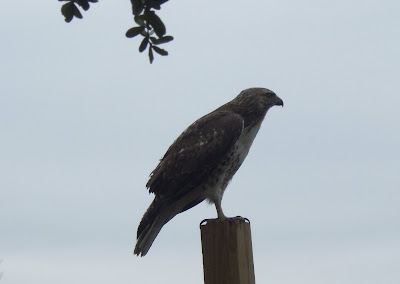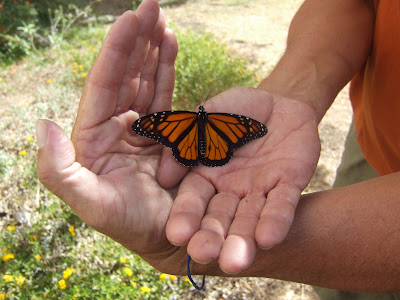During 7th period a biological event of avian proportions played out in the Back 40. Coach Moore noticed a Red tailed hawk perched on the chicken tractor. Mr. Brooks students were next on the scene. I noticed the hullaballoo outside my window as Dirk and some of his classmates were trying their best to protect the chickens. I grabbed my trusty digital and captured these images.
He (she?) patiently waited for another chance at the chickens. It was an amazing site as he would glide from tree branch to post to light fixture and back again. Except when Dirk flailed his arms, the hawk (quickly tagged Tony) seemed oblivious to the excited human spectators. I got within five feet- close enough.
In the end two chickens suffered minor injuries, the hawk settled for a mockingbird, and a couple of dozen humans got a rare up close view of a top predator pursuing prey.





























































